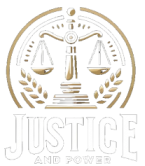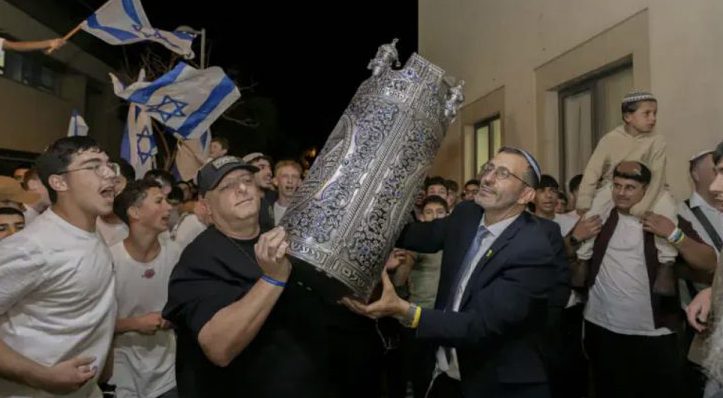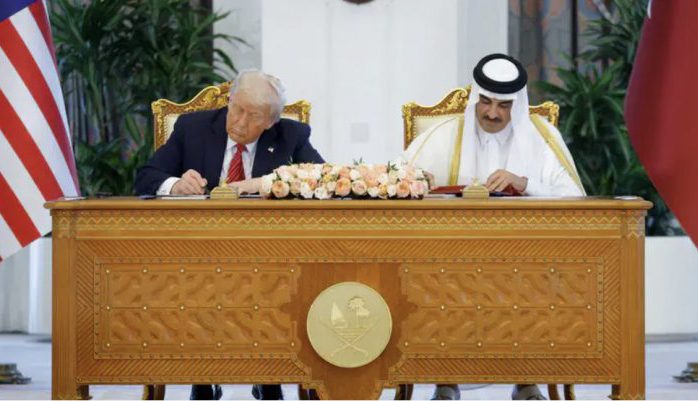Why is it appropriate that we begin reading this Book on the Shabbat of the month of redemption (whether Nissan or Adar)?
Ever since the yearly cycle of Torah readings was standardised towards the end of the Second Temple era, and the fixed calendar as calculated by Hillel II (Hillel ben Yehudah, Nasi – head – of the Sanhedrin) was adopted in 4119 (359 C.E.), Parashat Vayikra has invariably been on the first Shabbat of Nissan in non-leap years (as this year 5785 is).
In leap years, Parashat Vayikra almost always coincides with Shabbat Zachor, the Shabbat which immediately precedes Purim.
Very occasionally it is the first Shabbat in Adar II. This happens solely in a leap year which begins on a Thursday and in which Marcheshvan and Kislev both have 30 days, which has only happened four times in the last 60 years: the last time was 11 years ago, and the next time will be in 10 years.
This prompts the question: Is there any organic connexion between Parashat Vayikra, Nissan, and Purim?
Let us begin our answer by noting the many factors which connect Purim and Pesach:
They are both Festivals which celebrate redemption (Pesach the first redemption from Egypt, Purim the second redemption from Babylon/Persia);
We have a principle that we begin studying the laws of every Festival 30 days before the Festival, therefore we begin studying the laws of Pesach on Purim.
Haman cast the lot to decide in which month to exterminate all the Jews in the Persian Empire in Nissan (Esther 3:7), and Adar was selected as the month for extermination.
The three-day fast that Esther proclaimed (Esther 4:16) was on the 13th, 14th, and 15th of Nissan (Esther Rabbah 8:6), so the day that Esther revealed Haman’s plot to King Achashverosh (Esther 7) was on the first day of Pesach.
Haman therefore was hanged on the first day of Pesach.
In a leap year we celebrate Purim in Adar II, “in order to connect [the Festival of] redemption with [the Festival of] redemption” (Megillah 6b, Yerushalmi Megillah 1:5 et al.). This is counterintuitive, because the Book of Esther itself records the events as having happened “in the twelfth month, which is the month of Adar” (Esther 3:7, 3:13, 8:12, 9:1); in a leap year, however, “the twelfth month” is Adar I – yet we celebrate Purim in Adar II, which is the thirteenth month. The principle of connecting Purim to Pesach overrides the principle of celebrating Purim “in the twelfth month”.
The Talmud tells us that “when Adar comes in we increase our joy” (Ta’anit 29a), on which Rashi comments simply, “Israel had days of miracles – Purim and Pesach”.
There is more, but we have established the principle that Purim and Pesach are intimately connected.
In our calendar, Parashat Vayikra serves as an introduction either to Pesach (in a non-leap year) or to Purim (in a leap year).
And so we paraphrase our earlier question: What connexion does Parashat Vayikra have with Purim and Pesach, the two Festivals of redemption? How does Parashat Vayikra introduce redemption?
The Book of Exodus opens with the Children of Israel enslaved in Egypt, and records the Exodus with all its attendant miracles, the Splitting of the Red Sea, the Giving of the Torah, the manna – and then, the final five Parashot, the final 16 chapters of the Book, record the preparations for building the Mishkan (the Tabernacle) and the actual building thereof.
Well over one-third of the Book of Exodus – 454 verses out of a total of 1,209 – is dedicated to the construction of the Mishkan; this is the conclusion of the Book of Exodus.
Now, with the Mishkan ready to function, ready for sacrifices, the Book of Leviticus begins:
“When He called to Moshe, Hashem spoke to him from the Tent of Meeting saying: Speak to the Children of Israel, saying to them: Any person from among you who sacrifices a sacrifice to Hashem…”, and then follow the laws for sacrifices.
The אֹהֶל מוֹעֵד, Tent of Meeting, is the most commonly-used name for the Mishkan.
The Ramban, in his Introduction the Book of Exodus, notes that when the Children of Israel left Egypt they were redeemed from slavery, but they were still in exile, not yet in the Land of Israel. So the redemption from Egypt would be complete only 40 years later, when they crossed the River Jordan into Israel.
Completing the construction of the Mishkan was another crucial step on the way to redemption. It was only with the functioning Mishkan that every Jew was able to bring sacrifices, and thus to build a closer and more immediate relationship with G-d:
The word קָרְבַּן, korban, meaning “sacrifice”, is from the root קָרוֹב, karov, meaning “near”. Hence the sacrifice is best rendered as a “closeness-facilitator”: the קָרְבַּן, korban (sacrifice) brings the Jew קָרוֹב, karov (close) to G-d.
The Book of Leviticus is saturated with sacrifices, and as such is the introduction to the redemption.
So it is beautifully appropriate that we begin reading this Book on the Shabbat of the month of redemption (whether Nissan or Adar), on the Shabbat immediately before the Festival of Redemption – either Pesach or Purim.





